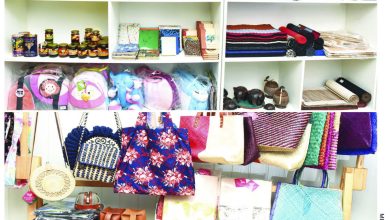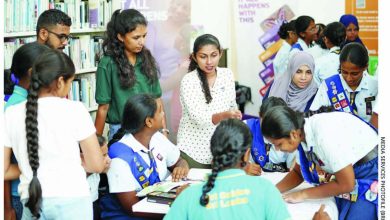UNDP

Q: How has climate change impacted Sri Lanka?
A: From a dire and distant forecast, climate change has become an everyday phenomenon. For Sri Lanka, it’s a fairly serious issue. We top the list of countries that are most vulnerable to extreme climatic events such as floods and drought.
Normal rainfall years are rare. This year alone, monsoons were erratic, multiple heat advisories were issued, and we witnessed a quicker and more severe onset of drought in the Dry Zone.
Crop losses and forest fires were regular news items in July. Globally, a link has been established between climate change and the spread of dengue, which was also high in 2019.
Based on the Department of Meteorology’s projections for 2050 and 2100, rainfall uncertainty will be quite high in the Dry Zone. If Sri Lanka’s central mountain ranges face more erratic rainfall, this will impact catchment areas and our rivers in turn.
Q: So how can citizens highlight the severity of this threat?
A: Learning from global activists like Greta Thunberg in Sweden, the younger generation must apply more pressure on key decision makers who may not see the worst effects of decisions made today.
The media must also highlight climate change in an understandable manner by reporting its effects and links to epidemics such as dengue, and the impact it has on everyday activities like farming.
Furthermore, the scientific community – including young research students at universities and other academic institutions – can generate new research to present evidence on the effects of climate change, which will contribute to Sri Lanka’s long-term development plans.
Q: Could you outline UNDP’s role in Sri Lanka?
A: Being the development arm of the UN, the United Nations Development Programme (or UNDP) has been a trusted development partner since 1967, supporting the Government of Sri Lanka in achieving national priorities.
In our environment portfolio, we cover three main themes: biodiversity conservation, clean energy and climate adaptation. UNDP Sri Lanka is committed to tackling climate change to improve the resilience of people, and key economic sectors such as agriculture and water.
Q: How is UNDP looking to help the country achieve sustainability by 2030 through the Sustainable Development Goals (SDGs)?
A: Today’s development challenges – from climate crises to rising inequalities – cannot be dealt with in isolation. The way we work and solutions we develop must be integrated.
The 2030 Agenda for Sustainable Development mirrors this reality through its package of 17 indivisible goals covering the social, economic and environmental dimensions of development. It is designed to enable countries to respond to these complex challenges.
This is where UNDP comes in and our focus is clear: we support governments by providing integrated development solutions to complex problems encountered by developing countries.
Sustainable development requires broader visioning. We draw from different projects and support key planning functions at national, provincial and local government levels, and work with multiple line ministries to deliver these solutions.
In addition, we leverage financing from global funds such as the Global Environment Facility and Green Climate Fund, as well as partner with the private sector including entities in the banking and hotel sectors.

Q: Could you elaborate on some of UNDP’s projects?
A: A key project centres on the restoration of tank cascade systems in villages across the Dry Zone as smallholder farmers feel the effects of climate change the most. We piloted the rehabilitation of such tanks to make them more climate resilient.
Today, we’re working on a number of tanks across several cascade systems as we realised that working on one or two tanks alone would yield no impact.
The advantages are numerous: the microclimate improves, people have water for everyday needs and there is groundwater in wells.
Another project focusses on renewable energy. UNDP has supported the government in reviewing its energy policies to reduce greenhouse gas emissions. Such policy analysis indicates short and medium-term options, which in turn support the government in achieving its policy target of generating 50 percent of electricity through renewable energy by 2030.
We also work in the Greater Colombo area to preserve the wetlands that are rich in biodiversity. This involves collaborating with community organisations to encourage traditional paddy production, and conserve the wetlands for research and wildlife. Wetland conservation within Colombo helps manage erratic rainfall; it serves as flood mitigation and cools the environment.
Q: How can citizens adapt and mitigate the effects of climate change?
A: We need to transform systems concerning waste, forests, energy and transport through technological leaps. Citizens must be aware of the role each of us has to play. We all have a responsibility to change and drive development in a different direction to ensure a sustainable Sri Lanka.

Tharuka Dissanaike
Policy and Design Specialist (Environment)
UNDP Sri Lanka
Telephone 2580691
Email socialmedia.lk@undp.org
Website www.lk.undp.org





